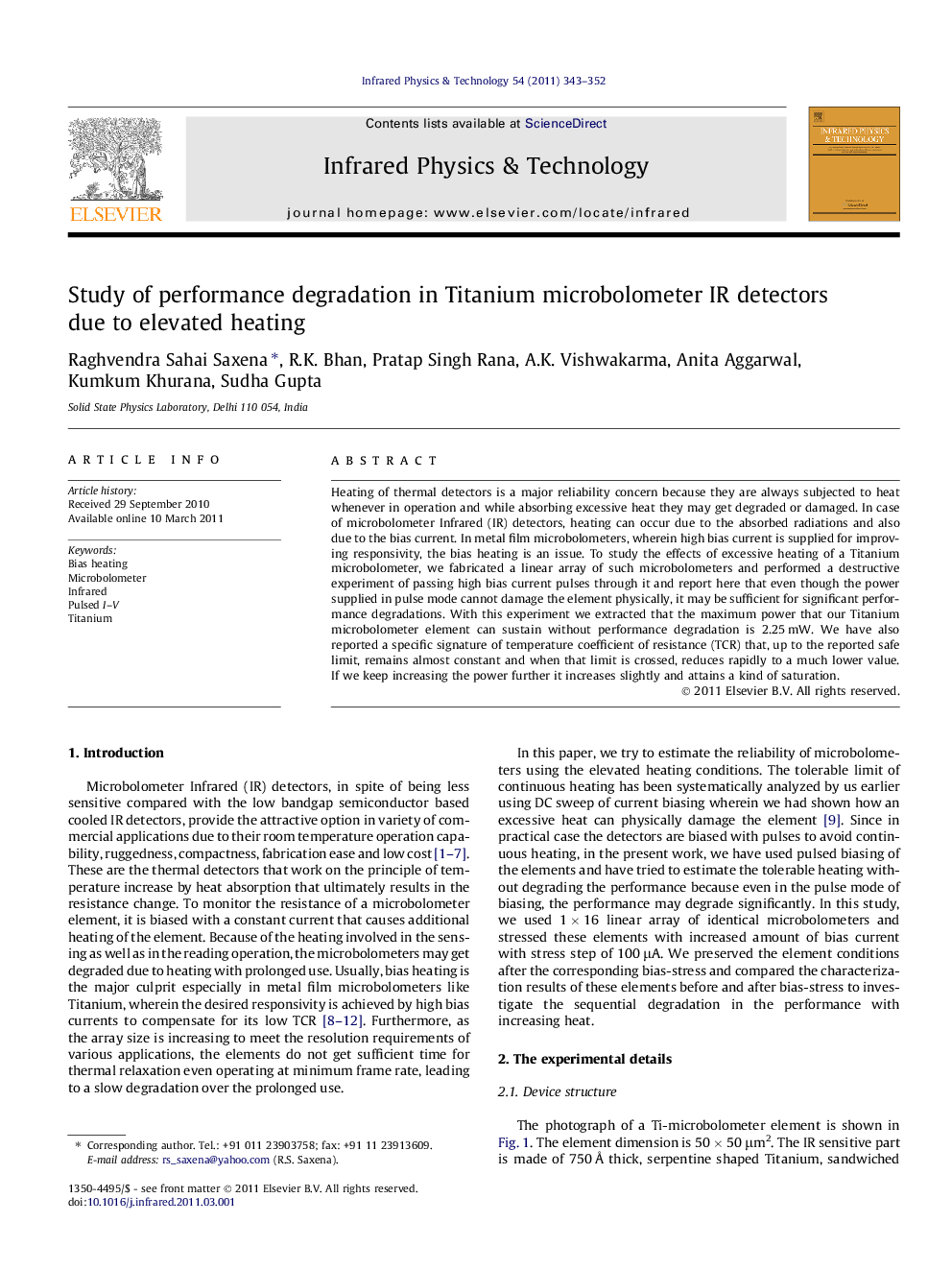| Article ID | Journal | Published Year | Pages | File Type |
|---|---|---|---|---|
| 1784653 | Infrared Physics & Technology | 2011 | 10 Pages |
Heating of thermal detectors is a major reliability concern because they are always subjected to heat whenever in operation and while absorbing excessive heat they may get degraded or damaged. In case of microbolometer Infrared (IR) detectors, heating can occur due to the absorbed radiations and also due to the bias current. In metal film microbolometers, wherein high bias current is supplied for improving responsivity, the bias heating is an issue. To study the effects of excessive heating of a Titanium microbolometer, we fabricated a linear array of such microbolometers and performed a destructive experiment of passing high bias current pulses through it and report here that even though the power supplied in pulse mode cannot damage the element physically, it may be sufficient for significant performance degradations. With this experiment we extracted that the maximum power that our Titanium microbolometer element can sustain without performance degradation is 2.25 mW. We have also reported a specific signature of temperature coefficient of resistance (TCR) that, up to the reported safe limit, remains almost constant and when that limit is crossed, reduces rapidly to a much lower value. If we keep increasing the power further it increases slightly and attains a kind of saturation.
► Study of heat tolerance. ► Used pulsed current with varying duty cycle. ► Observed TCR degradation.
